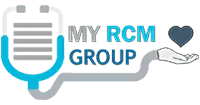
Medical coding and billing are not famous professions but the demand for them is on a constant rise and is seen over the past few years. There are questions popular in medical billing and coding:
“Do you have to be a medical graduate to become a biller or coder?”
“Is learning the terms hard”
“Are there specific courses or training programs to become a medical biller or coder?
To answer the first question, you do not need to be a medical graduate to become a biller BUT as a coder, a strong familiarization of the medical terms used in the area is needed to fully understand the language since coding is literally a translation of one form of language to another. Each code used in an encounter tells a backstory of what had transpired between the patient and the provider. “Is learning the terms hard?”. The difficulty is almost always subjective to each person and though a strong medical knowledge of these terms is favorable, learning them is always doable. Courses or training activities as a medical coder will always require first on the basic terminologies and eventually progressing into the deeper ones. If a medical term seems to be already out-of-range of a coder’s knowledge, a good, reliable medical dictionary is always a friend and ready to help.
The majority of the medical terms originate from Greek and Latin. They describe illnesses, injuries, medical conditions, the human anatomy, medical instruments, surgical and medical procedures and so much more that circulates the person’s health and the healthcare system. They are the building blocks for arriving a what is termed Medical Necessity. Medical necessities are the requirements to justify any procedures performed to treat a medical condition while maintaining the standard of care. The medical necessity then will then be under the justification of the diagnosis terms, which are a whole new set of terms describing the past and present condition of a patient. Just like a story being told, medical terms, diagnosis terms, and medical necessities are the words being used to make a reasonable claim. In short, the combination of these three should make sense otherwise, a claim can be rejected or denied. Doctors follow different treatment guidelines for a certain medical conditions and if these are followed correctly and truthfully, then there should be no fear on his side if he will raise suspicion from the paying insurance.
Basic Anatomy and its Systems, Physiology, and Pathophysiology
Usually, in the training for medical coders, the first one being discussed is the human anatomy. Anatomy is simply the study of the human body structure. A short introduction to physiology may be given but this is mostly due to having a deeper understanding of what is going on in a normal functioning body. Pathophysiology is where the business gets serious. This subject deals with the deranged conditions taught in physiology and is a direct foundation of the medical illnesses being encountered in the coding procedures. Information about the body systems is important and the books that are used in coding are structured according to the body systems. CPT books or the Current Procedural Terminology books contain all the procedural codes a coder can bill and, in these books, the information about the body systems is well structured and explained to the level of a medical coder.
Illness versus Disease
Most of the codes encountered will deal with the patient’s condition referring to an illness. Illness is a general term pertaining to an unhealthy feeling that there is something wrong with you. The disease has measurable signs and symptoms and affects the human body. A person may have a disease but is not ill and does not feel anything. On the other hand, a person may feel ill but is not actually suffering from a disease. A patient may feel nauseous with a headache but is not really under a disease. Conversely, a patient may be suffering from an early HIV infection but is not experiencing any signs and symptoms yet depending on the window period and the level of the CD4 he has. During an encounter, the physician documents his examination findings, working diagnosis, and treatment and management plan. He then bills this evaluation and management (E&M) encounter accordingly. E&M is just another fancy term for consultation.
Anatomy, illnesses, injuries, and diseases are all based on specific medical language and terms. Knowing them can allow coders to easily assign correct diagnoses and procedural codes. For that reason alone, a strong foundation for these medical terms is needed.
Injuries
Injuries are common encounters for the medical coder. If diseases and illnesses are more inclined to the medical side, injuries however are to the surgical side – well, mostly. A typical layman would think that an injury is due to an accident and picture a scene in his head where everything is bloody but the injury is more than that. It can go down to the cellular level and can cause disease. All diseases have injuries though not grossly seen. Acute injury refers to an accident wherein damage is quick and can be treated in over a short period of time. Chronic injury however refers to damage that is in a constant repeat of healing and repair and then gets damaged again. This is seen for example in diabetic patients wherein sometimes, the level of the blood sugar will be controlled but there are times that it will shoot up again. The rising of the blood sugar level contributes to microvascular damage and favors thrombus formation and kidney damage (which is actually also microvascular damage). An acute nature of the disease may range from mild damage to a life-threatening setting.
